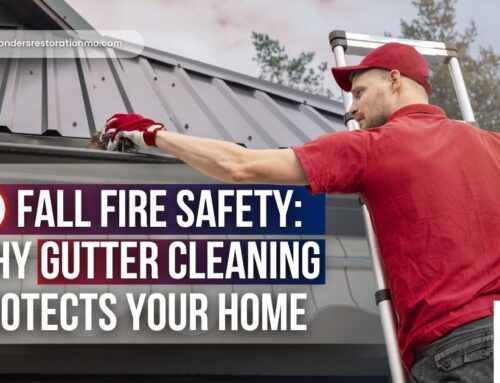How to Storm-Proof Your Home This Tornado Season
Springtime in Missouri can be beautiful, but if you’ve lived here long enough, you know you need to storm-proof your home before tornado season begins. It also brings a season of tornadoes, hail, flash floods, and strong winds. The suddenness and severity of these storms can cause widespread damage in minutes. For homeowners in areas like St. Louis, Jefferson County, and beyond, being unprepared can mean thousands in property loss or worse.
If you’re a first-time homeowner, welcome to a new level of responsibility and peace of mind when you do it right. You’ve likely spent time choosing paint colors and furniture, but how to storm-proof your house? It’s one of the most critical things you can do to protect the place you call home. This guide will break everything down in plain, clear steps so you’re never caught off guard.
Whether you’re new to homeownership or someone who’s weathered more than a few tornado warnings, this guide offers practical, actionable advice to storm-proof your home before disaster strikes.
Why Storm-Proofing Matters in Missouri
Missouri experiences an average of 45+ tornadoes per year, with April through June being peak months. According to NOAA’s National Centers for Environmental Information (NCEI), Missouri recorded an average of 46 tornadoes annually between 1991 and 2020. Add in high winds, saturated soil, and relentless downpours, and you have the recipe for basement floods, roof failures, shattered windows, and costly structural repairs.
But here’s the good news: Most storm-related damage is preventable with some foresight and smart preparation—even if you’ve never owned a home before. These emergency preparedness tips and tornado-specific strategies will give you peace of mind.
Summary: Top 10 Ways to Storm-Proof Your Missouri Home
| Task | Why It Matters |
|---|---|
| Roof Inspection | Prevents leaks and water infiltration |
| Window and door reinforcement | Stops wind pressure changes and debris |
| Gutter and drainage check | Protects your foundation from costly water damage |
| Yard cleanup | Minizes flying hazards during strong winds |
| Safe room setup | Protects your family during extreme conditions |
| Emergency kit creation | Keeps you safe, fed, and informed |
| Power backup plan | Helps you survive outages with comfort |
| Insurance review | Ensures you’re not stuck with surprise costs |
| Family communication plan | Keeps everyone safe and coordinated |
| Post-storm response checklist | Ensures quicker recovery and insurance support |
Final Thoughts: The Time to Prepare Is Now
Tornadoes and spring storms are unpredictable but your response doesn’t have to be. As a restoration expert serving Missouri families, I’ve seen how just a few simple steps can turn devastation into relief. Protecting your home means protecting your family, your memories, and your peace of mind.
Don’t wait until the storm hits. Prepare today and if the worst happens, know that First Responders Restoration will be here to help you recover swiftly, professionally, and with heart.








Leave A Comment